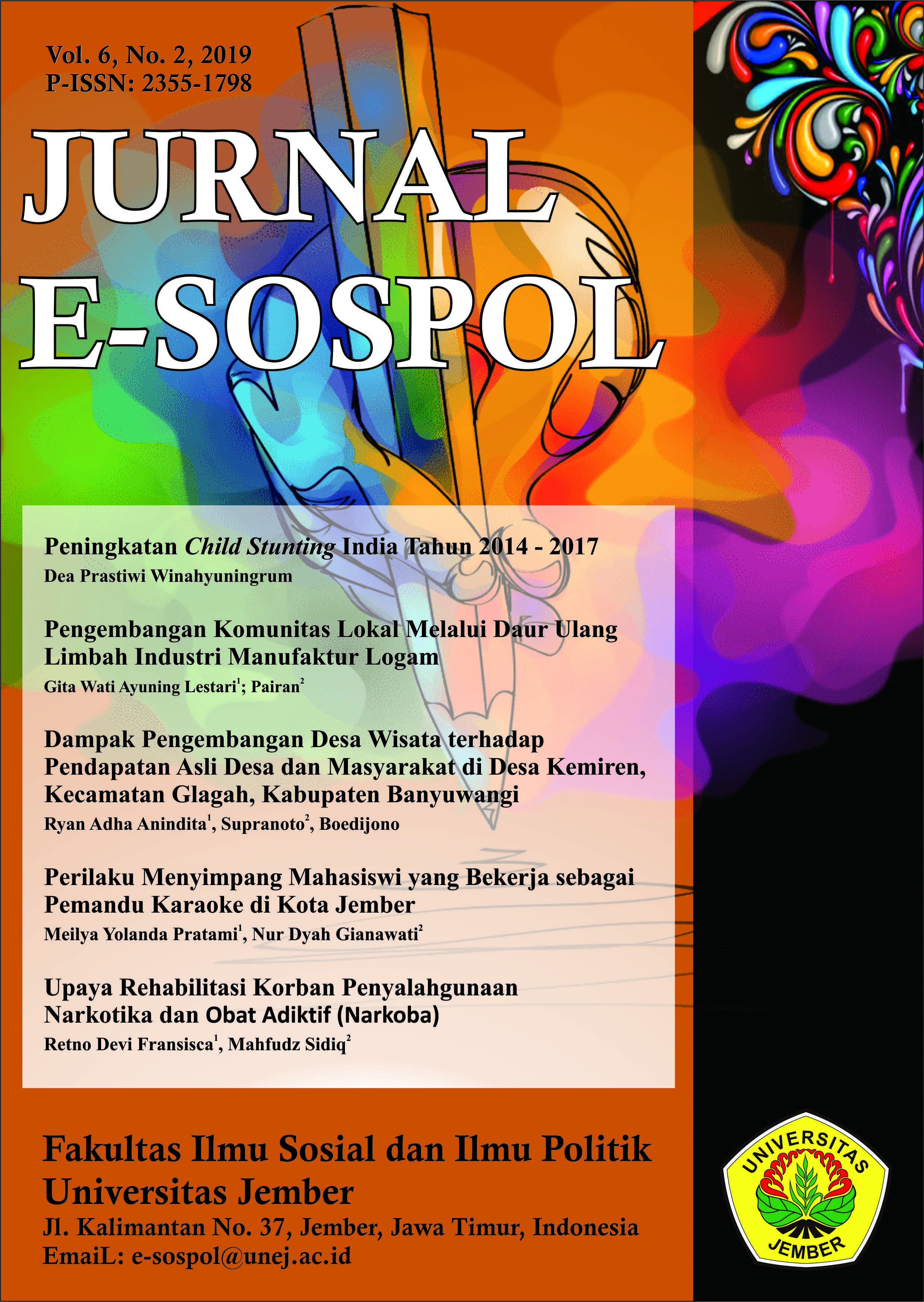Peningkatan Child Stunting India Tahun 2014 - 2017
DOI:
https://doi.org/10.19184/e-sos.v6i2.28649Abstract
In 2014, the India Global Hunger Index was 17,8. Then in 2017, India Global Hunger Index increased to 31,4, putting it at the rank of 100 categorized as serious. Comparing with the other countries in south Asia, India Global Hunger Index is higher than Nepal, Sri Lanka, and Bangladesh. India is only slightly above Pakistan and Afghanistan. There are many reasons why the hunger problem is high in South Asia. In India, the hunger problem is caused by child stunting. Child stunting grow highly in India with the number of 38,8%. This number can considered as the highest in the south Asia region. Child stunting in India grows every year from 2014 with 37% to 2017 with 38,8%. Child stunting grow high in India because of poor food security and health security. Poor food security in India related to the availability of food and bad access to the food. Meanwhile, poor health security in India related to the bad condition of health facility such as sanitation. The availability of food has decreased because of climate changes such as drought which caused the crops decreased. In other hand, bad access for food is caused by bad implementation of government policy. Due to the low availability of food in India, malnutrition among mothers grows high. Because of the bad access to the food, baby diet becomes poor. It also occurs due to the lack of health education from the government. These are the reason why child stunting in India keeps increasing from 2014 to 2017.
Downloads
Downloads
Published
Issue
Section
License
Penulis yang mengusulkan naskahnya untuk dapat diproses penerbitannya pada e-SOSPOL dianggap telah menyetujui beberapa hal sebagai berikut:
1. Penulis tidak dapat menarik naskah yang telah usulkan untuk diproses hingga mendapat jawaban dari Ketua Dewan Penyunting atas status naskah artikel ilmiahnya (diterima atau ditolak untuk diterbitkan).
2. Penerbit tidak bertanggung jawab terhadap kasus plagiasi atas artikel yang terbit pada e-SOSPOL
3. Penerbit tidak bertanggung jawab atas data dan isi dari artikel yang diterbitkan pada e-SOSPOL, dan sepenuhnya merupakan tanggung jawab penulis.








